Your cart is currently empty!
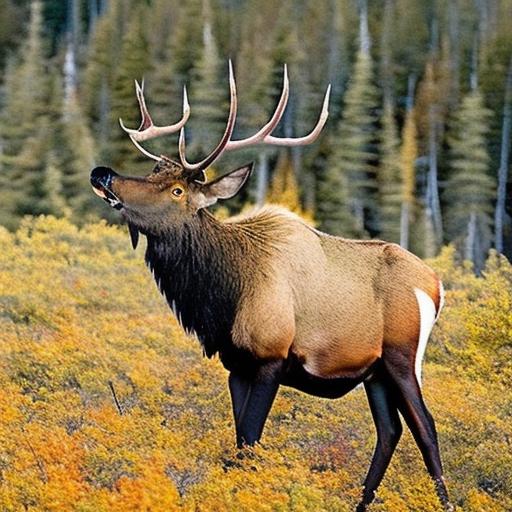
Unleashing the Thrill of Elk Hunting in Canada: A Guide to the Ultimate Adventure

Elk hunting is a popular outdoor activity in Canada, offering a unique experience for hunters who love the thrill of the chase. The vast wilderness and diverse landscapes of Canada provide the perfect backdrop for this exciting pursuit. In this blog post, we’ll cover everything you need to know about elk hunting in Canada, from preparing for the hunt to processing your kill and cooking delicious wild game meals.
Key Takeaways
- Elk hunting in Canada offers a thrilling and challenging experience for hunters.
- Proper preparation, including gear, licenses, and safety considerations, is essential for a successful hunt.
- Top locations for elk hunting in Canada include British Columbia, Alberta, and Saskatchewan.
- Understanding elk behavior and habits is crucial for tracking and spotting game.
- Strategies for approaching and taking down elk, as well as techniques for field dressing and butchering, are important skills for hunters to master.
Preparing for the Hunt: Gear, Licenses, and Safety Considerations
Before you head out on your elk hunting trip, you need to make sure you have the right gear. This includes a high-quality rifle or bow, appropriate ammunition or arrows, camouflage clothing, sturdy boots, and other essential hunting equipment. It’s also important to pack enough food, water, and camping gear if you plan on staying overnight in the wilderness.
In addition to gear, you’ll also need to obtain the necessary licenses and permits for elk hunting in Canada. Each province has its own regulations and requirements, so it’s important to research and understand the specific rules for the area you plan to hunt in. This may include obtaining a hunting license, purchasing tags for specific game animals, and adhering to bag limits.
Safety should always be a top priority when hunting. Make sure you are familiar with firearm safety protocols and practice shooting before your trip. It’s also important to let someone know where you will be hunting and when you expect to return. Carry a first aid kit and be prepared for emergencies. Remember to respect wildlife and their habitats, and always follow ethical hunting practices.
Choosing the Right Hunting Grounds: Top Locations for Elk Hunting in Canada
Canada is home to some of the best elk hunting grounds in the world. From the Rocky Mountains in Alberta and British Columbia to the boreal forests of Saskatchewan and Manitoba, there are plenty of prime locations to choose from. Each region offers its own unique challenges and opportunities for elk hunting.
The Rocky Mountains are known for their rugged terrain and large elk populations. The vast wilderness areas provide ample opportunities for hunters to spot and track game. The boreal forests of Saskatchewan and Manitoba offer a different hunting experience, with dense vegetation and a more stealthy approach required. These areas are also home to a variety of other game animals, making them a great choice for hunters looking for a diverse hunting experience.
Understanding Elk Behavior and Habits: Tips for Tracking and Spotting Game
| Topic | Metric |
|---|---|
| Elk Behavior | Elk are most active during dawn and dusk |
| Elk are social animals and live in herds | |
| Elk communicate through vocalizations and body language | |
| Elk Habits | Elk are herbivores and primarily eat grasses, leaves, and bark |
| Elk migrate to higher elevations in the summer and lower elevations in the winter | |
| Elk are known to wallow in mud to cool off and remove parasites | |
| Tips for Tracking Elk | Look for fresh tracks and droppings |
| Listen for bugling calls during the rutting season | |
| Scan the horizon for movement and use binoculars to spot elk from a distance |
To be a successful elk hunter, you need to understand the behavior and habits of these animals. Elk are social animals that live in herds, with dominant males known as bulls leading the group. They are most active during the early morning and late afternoon, so it’s important to plan your hunting trips accordingly.
When tracking elk, look for signs such as tracks, droppings, rubs on trees, and wallows. Elk tend to follow well-defined trails, so keep an eye out for these paths as you navigate through the wilderness. Pay attention to wind direction and use it to your advantage when approaching elk, as they have a keen sense of smell.
Spotting game can be challenging, as elk have excellent camouflage and can blend into their surroundings. Look for movement or any unusual shapes that stand out from the natural landscape. Use binoculars or spotting scopes to scan the area and identify potential targets.
The Thrill of the Chase: Strategies for Approaching and Taking Down Elk
Elk hunting is all about the thrill of the chase. Once you’ve spotted a herd or an individual elk, it’s time to put your stalking skills to the test. Move slowly and quietly, using cover such as trees or rocks to conceal your movements. Take advantage of natural features in the landscape to get closer to your target without being detected.
When approaching elk, it’s important to be patient and wait for the right moment to take your shot. Look for a clear and ethical shot opportunity, aiming for vital organs such as the heart or lungs. Practice shooting from different positions and distances to improve your accuracy and confidence.
If you’re using a bow, make sure you’re within your effective range before taking a shot. Elk are large animals and require a well-placed arrow to ensure a quick and humane kill. If you’re using a rifle, choose an appropriate caliber and ammunition that will deliver enough stopping power to bring down an elk.
Processing Your Kill: Techniques for Field Dressing and Butchering Elk
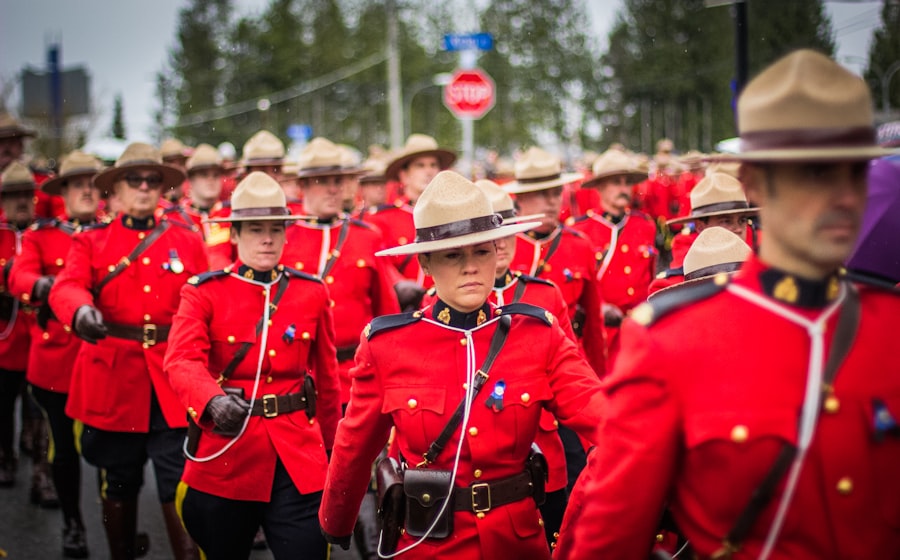
Once you’ve taken down an elk, you need to know how to process it. Field dressing is the process of removing the internal organs and skin from the animal, while butchering involves breaking down the carcass into manageable cuts of meat.
Field dressing should be done as soon as possible after the kill to ensure the meat stays fresh. Start by making an incision from the base of the sternum to the anus, being careful not to puncture any organs. Carefully remove the internal organs, taking care not to contaminate the meat with any fecal matter or urine.
After field dressing, it’s time to butcher the elk. This involves breaking down the carcass into primal cuts such as steaks, roasts, and ground meat. It’s important to have sharp knives and a clean workspace for this process. Start by removing the legs and then work your way up to the ribcage and backstraps. Trim off any excess fat or connective tissue and package the meat in freezer-safe bags or containers.
Cooking with Elk: Recipes and Tips for Preparing Delicious Wild Game Meals
Elk meat is delicious and nutritious, with a rich flavor that pairs well with a variety of ingredients and cooking methods. It’s leaner than beef and has a slightly gamey taste, making it a popular choice for health-conscious individuals and adventurous eaters.
There are many ways to prepare elk meat, from grilling and roasting to slow cooking and braising. Marinating the meat before cooking can help tenderize it and add flavor. Common marinade ingredients include soy sauce, Worcestershire sauce, garlic, and herbs.
For grilling or roasting, season the meat with salt, pepper, and your favorite spices. Cook it over high heat until it reaches your desired level of doneness. For slow cooking or braising, sear the meat first to lock in the juices and then cook it in a flavorful liquid such as broth or wine until it becomes tender and falls apart.
Elk meat can be used in a variety of dishes, from burgers and stews to stir-fries and chili. Experiment with different recipes and cooking techniques to find your favorite way to enjoy this delicious wild game.
Conservation and Sustainability: Best Practices for Responsible Hunting in Canada
Hunting should always be done responsibly and sustainably to ensure the long-term health of wildlife populations and their habitats. It’s important to follow ethical hunting practices and adhere to all regulations and bag limits set by wildlife management authorities.
Responsible hunters respect wildlife and their habitats. They only take what they need and make every effort to recover their kill. They also practice fair chase, giving animals a chance to escape and avoiding unethical practices such as baiting or shooting from vehicles.
Conservation efforts play a crucial role in maintaining healthy elk populations in Canada. Hunters can contribute to these efforts by supporting organizations that work to protect wildlife habitats, promote sustainable hunting practices, and conduct research on elk populations.
The Social Side of Elk Hunting: Building Bonds and Sharing Stories with Fellow Hunters
Elk hunting is not just about the pursuit of game; it’s also a great way to build bonds and share stories with fellow hunters. Many hunters form lifelong friendships and create lasting memories while out in the wilderness.
Hunting camps provide a unique opportunity for hunters to come together and share their experiences. These camps often become a hub of camaraderie, where hunters gather around the campfire to swap stories, share tips and techniques, and enjoy each other’s company.
The social aspect of elk hunting extends beyond the hunt itself. Many hunters participate in hunting clubs or organizations that host events, workshops, and fundraisers. These gatherings provide a platform for hunters to connect with like-minded individuals, learn from experienced hunters, and contribute to conservation efforts.
Beyond the Hunt: Other Outdoor Adventures to Enjoy in Canada’s Wild Places
Canada is home to some of the most beautiful wilderness areas in the world, offering a wide range of outdoor adventures beyond elk hunting. Whether you’re interested in fishing, hiking, camping, or wildlife photography, there’s something for everyone to enjoy in Canada’s wild places.
Fishing is a popular activity in Canada, with countless lakes, rivers, and streams teeming with fish. From fly fishing for trout in the Rocky Mountains to trolling for salmon on the coast of British Columbia, there are endless opportunities to cast a line and reel in a big catch.
Hiking and camping are also popular activities in Canada’s wilderness areas. The country is home to numerous national parks and protected areas that offer well-maintained trails and stunning scenery. Whether you’re looking for a leisurely day hike or a multi-day backpacking adventure, there are plenty of options to choose from.
Wildlife photography is another great way to experience Canada’s wild places. From majestic elk and moose to elusive wolves and bears, there are countless opportunities to capture stunning images of wildlife in their natural habitats. Just remember to keep a safe distance and respect the animals’ space.
In conclusion, elk hunting in Canada offers a unique and thrilling experience for outdoor enthusiasts. From preparing for the hunt to processing your kill and cooking delicious wild game meals, there’s a lot to learn and enjoy. By following ethical hunting practices and respecting wildlife and their habitats, hunters can contribute to conservation efforts and ensure the long-term sustainability of elk populations in Canada. So grab your gear, obtain the necessary licenses, and head out into the wilderness for an unforgettable elk hunting adventure.
If you’re planning an elk hunting trip in Canada, you might also be interested in learning about groundhog hunting. Groundhogs can be a challenging target, and if you’re wondering whether a pellet gun can effectively take them down, this article on Old Oak Syndicate has all the answers. From tips on shot placement to the best pellet gun for the job, this article will provide you with valuable insights for your next hunting adventure.
FAQs
What is elk hunting?
Elk hunting is the practice of pursuing and killing elk for sport or food.
Is elk hunting legal in Canada?
Yes, elk hunting is legal in Canada, but regulations and restrictions vary by province and territory.
What are the requirements for elk hunting in Canada?
Requirements for elk hunting in Canada include a valid hunting license, tags, and permits. Hunters must also follow specific regulations regarding hunting methods, seasons, and bag limits.
What equipment is needed for elk hunting in Canada?
Equipment needed for elk hunting in Canada includes a firearm or bow, appropriate ammunition or arrows, hunting clothing, boots, binoculars, and a hunting knife.
What is the best time of year for elk hunting in Canada?
The best time of year for elk hunting in Canada varies by province and territory, but generally falls between September and November during the rutting season.
What is the cost of elk hunting in Canada?
The cost of elk hunting in Canada varies depending on the province or territory, the type of hunt, and the outfitter. Prices can range from a few thousand dollars to tens of thousands of dollars.
What are the benefits of elk hunting in Canada?
Benefits of elk hunting in Canada include the opportunity to experience the outdoors, improve hunting skills, and obtain a source of organic, free-range meat. Hunting also contributes to wildlife management and conservation efforts.

Herb has been a longtime lover of the outdoors. Whether it be hunting, camping, fishing or just getting outside to reset. Proud father and animal lover. Bourbon anyone?

by
Tags:
Comments

Categories
- Big Game Hunting (301)
- Deer (202)
- Reviews (3)
- Shooting (16)
- Slingshot (1)
- Small Game Hunting (42)
- Upland Hunting (126)
- Waterfowl Hunting (3)


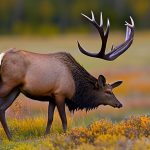
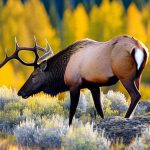
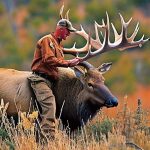
Leave a Reply